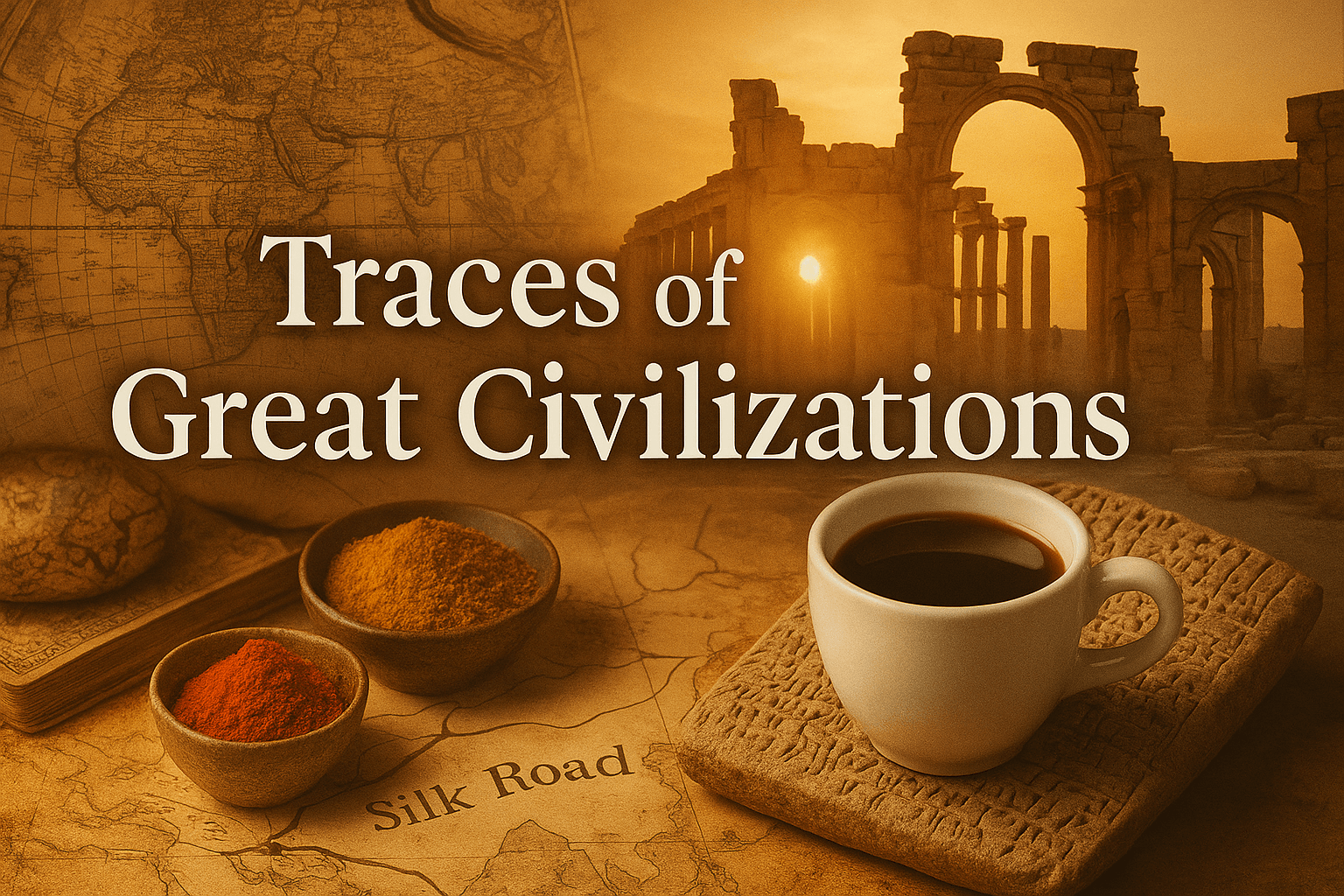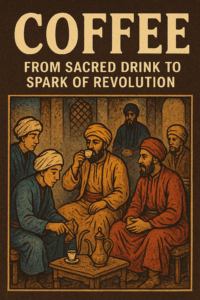Introduction: Hidden History of Coffee and Everyday Objects That Changed the World
The hidden history of coffee is more powerful than you might imagine. What if the cup of coffee you sip every morning or the pinch of spice in your cooking carried within it the power to reshape world history? History does not live only in museums or thick books—it is woven into the ordinary objects we use daily. In this article, we will uncover how everyday items like spices, coffee, and silk influenced civilizations, altered empires, and continue to shape our culture today.
Spices: Tiny Seeds That Redrew the World Map
Why Medieval Europe Obsessed Over Spices
In medieval Europe, spices were worth more than gold. Without refrigeration, spices preserved food and masked odors, but beyond utility, they symbolized wealth and power. Pepper, cloves, and nutmeg were so rare in cold Europe that they became luxury items used by the elite at feasts and even as medicine.
Spice Trade and the Dawn of Empire
Europe’s hunger for spices launched the Age of Exploration. Overland Silk Road routes were monopolized by the Ottomans and Italian merchants, forcing nations like Portugal and Spain to seek sea routes. Columbus’s voyage to the Americas and Vasco da Gama’s journey around Africa both stemmed from the spice quest, leading to colonial expansion, global trade networks, and ultimately imperialism.
Legacy of Spices in Modern Cuisine
Today, global cuisine still reflects this legacy. Indian curry, European gingerbread, and cinnamon rolls carry the story of centuries of spice trade and cultural fusion.
Spice Table Example:
Pepper (India): Called “black gold,” motivated sea route exploration.
Cloves (Moluccas): Used medicinally and fought over by empires.
Nutmeg (Banda Islands): Symbol of elite luxury, sometimes controversial.
Cinnamon (Sri Lanka): Used since ancient Egypt as preservative and flavoring.
Coffee: From Sacred Drink to Spark of Revolution
The Islamic World’s Gift to Europe
Coffee’s legend begins in Ethiopia with a shepherd noticing energized goats. From there, it spread through the Islamic world as “the wine of Islam,” fueling prayer and intellectual discussions. By the 17th century, Ottoman merchants introduced it to Europe, where it quickly gained popularity despite initial resistance.
Coffeehouses: The “Penny Universities”
London and Paris coffeehouses became hubs of debate and knowledge exchange. Known as “penny universities,” they offered news, conversation, and intellectual ferment. These spaces influenced Enlightenment thought and even revolutionary ideas in France.
From Instant Coffee to Specialty Culture
Industrialization made coffee a global staple, while modern times ushered in specialty coffee, representing individuality and lifestyle. From Starbucks to artisan roasters, coffee remains both a social and cultural symbol.
This story reveals the hidden history of coffee, where a simple beverage became a force that shaped society and culture.
How coffee fueled revolution-and revolutionary ideas.
Silk: The Thread That Wove East and West
China’s Greatest Secret
Silk production began 5,000 years ago in China, remaining an exclusive secret for centuries. It was not just fabric but a symbol of power, wealth, and diplomacy. Emperors gifted silk to secure peace or alliances.
The Silk Road: Artery of Civilizations
From the Han dynasty onward, the Silk Road carried more than goods. Ideas, religions, and technologies flowed between East and West. Grapes, Buddhism, papermaking, and gunpowder all traveled this route, shaping world civilizations.
Silk’s Timeless Luxury
From Roman nobles to modern haute couture, silk has remained a symbol of elegance. It continues to inspire fashion, art, and literature, preserving its cultural legacy.
Conclusion: History Lives in Everyday Objects
Spices triggered exploration, coffeehouses ignited revolutions, and silk connected continents. These ordinary items shaped extraordinary shifts in civilization.
Look around you: the cotton shirt you wear tells of the Industrial Revolution, the potato on your table recalls Ireland’s famine, and your smartphone embodies global trade and technology rivalry. History is not distant—it lives in the objects we touch every day.![]()

